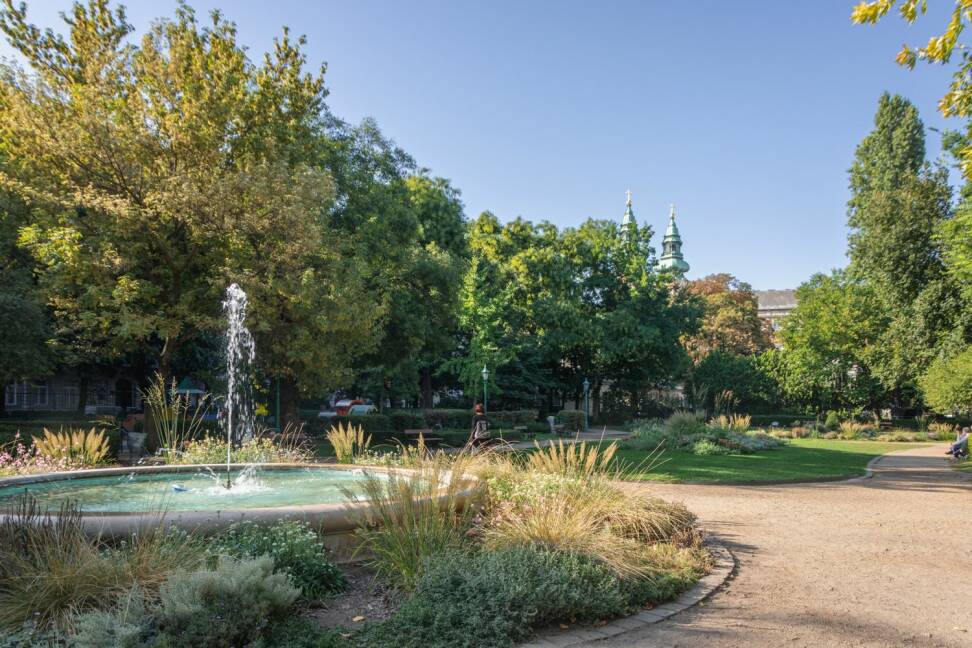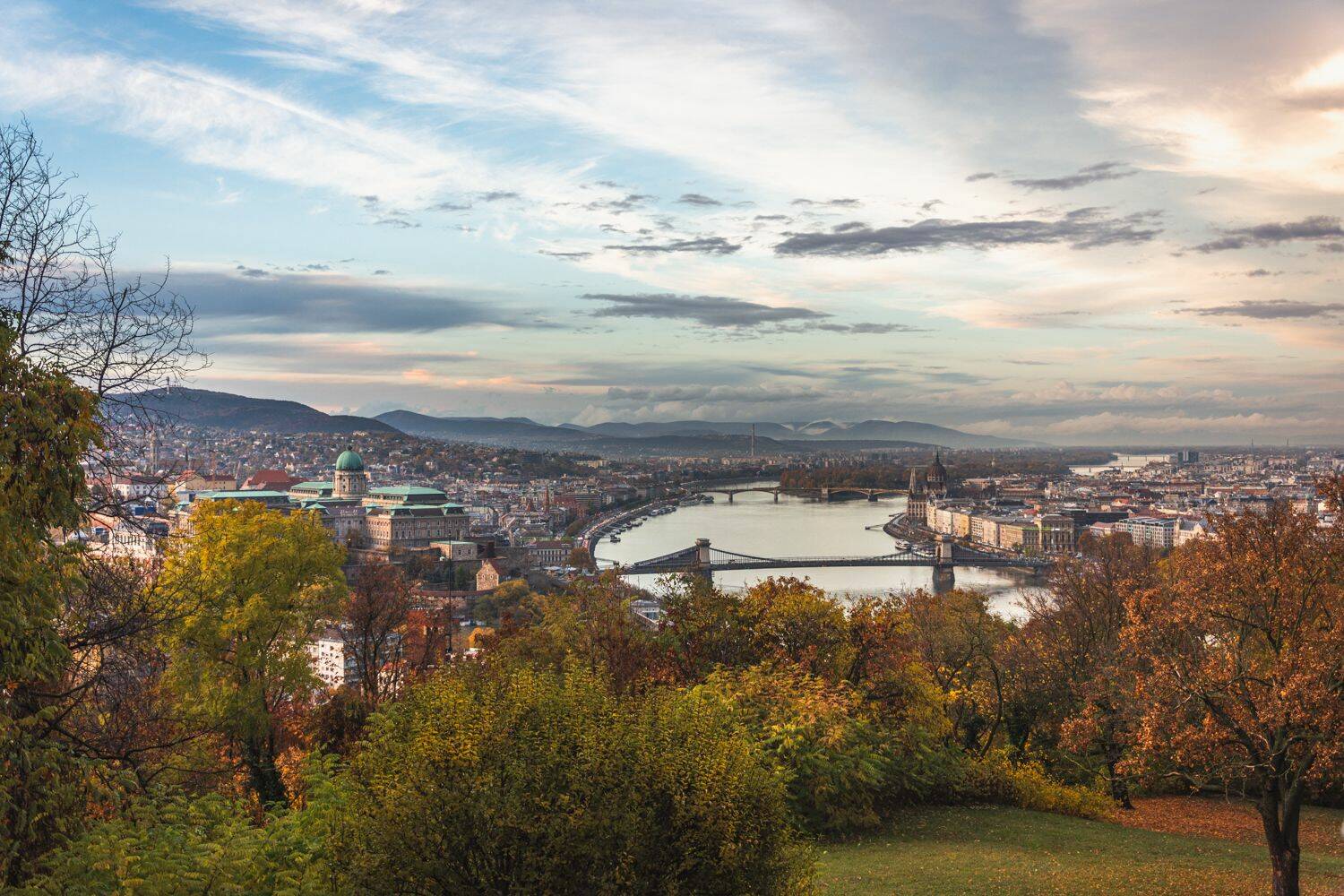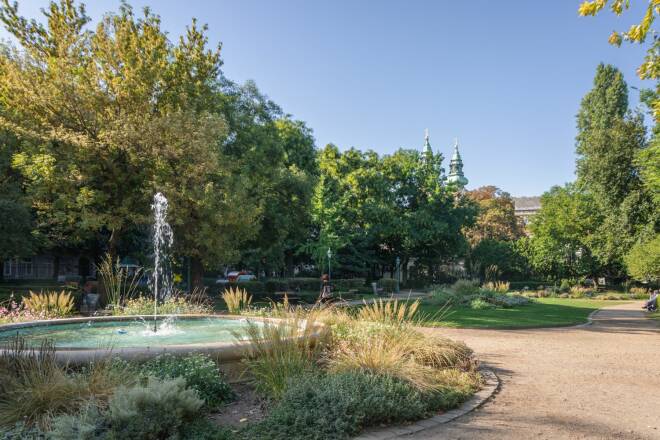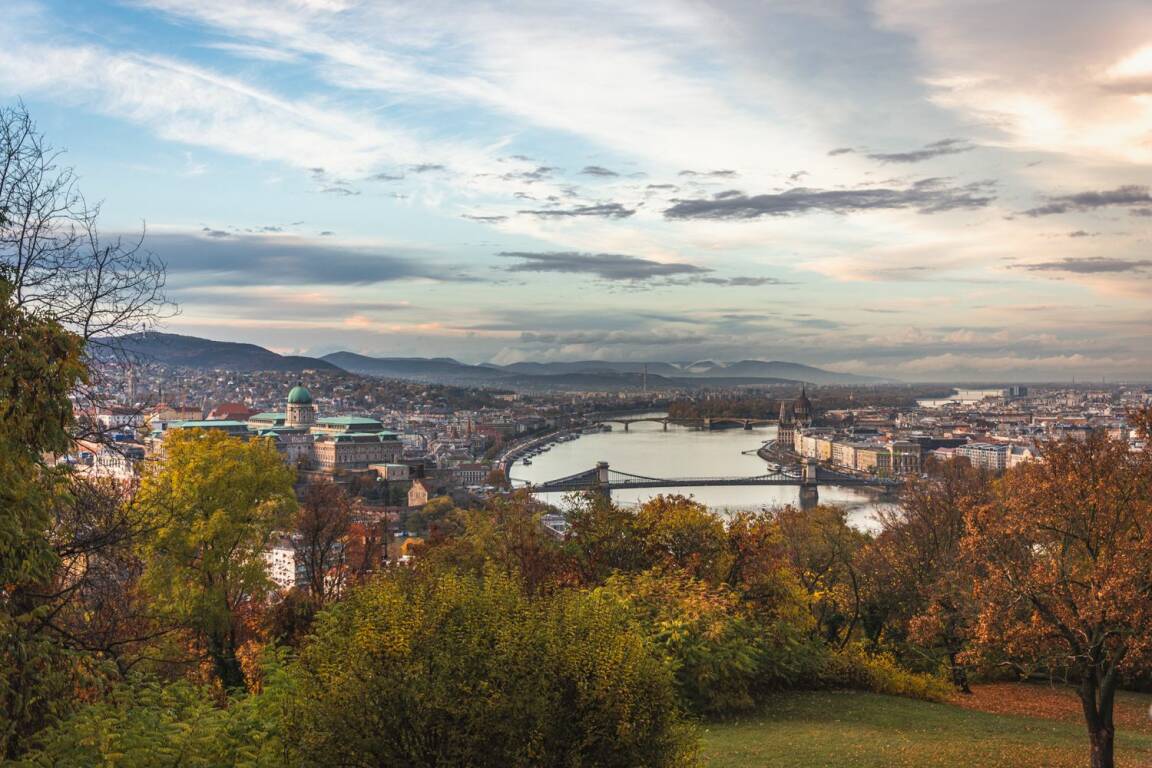Budapest

SCROLL DOWN
Budapest has high ambitions when it comes to becoming a green city: it wants to increase the green space from 6m² per capita in 2019 to 7m² per capita in 2030. In total that means an increase of green spaces from 999 ha to 1225 ha (+226 ha). According to the city of Budapest, the green spaces and green infrastructure of the city are fundamental for the physical and mental wellbeing of its residents.
Anyone who has ever been to Budapest knows the beautiful green isles (‘Szigets’) in the mighty Danube.
“The initiative is supported by the European Union and focuses on several themes.
High quality maintenance of existing green infrastructure;
Adapt the management of green spaces to the effects of climate change, such as extreme draughts and intensive rainfalls;
Increase biodiversity in the city’s green spaces by new, nature-based management approaches;
Involve the residents of Budapest in both planned developments and the everyday management of green spaces;
Make green space management more efficient by new IT technologies.
The task of managing and developing Budapest’s green infrastructure is split between several actors, such as the Budapest City Council, district municipalities and the Hungarian State. The overall goals are:
goals
BudapestBrand/Bartha Dorka
BudapestBrand/Bartha Dorka

Budapest aims for better cooperation between involved organizations and wants to work closely with residents and businesses to achieve new levels of cooperation, delegation of power and citizens’ control. For example, the city introduces a new public consultation protocol of green infrastructure development projects above the value of 100 million HUF. Mr. Sándor Bardóczi, Budapest’s chief landscape architect, says: “The residents’ environmental awareness is fundamental in making Budapest more green and livable.”
Green Cities
Budapest


Budapest aims for better cooperation between involved organizations and wants to work closely with residents and businesses to achieve new levels of cooperation, delegation of power and citizens’ control. For example, the city introduces a new public consultation protocol of green infrastructure development projects above the value of 100 million HUF. Mr. Sándor Bardóczi, Budapest’s chief landscape architect, says: “The residents’ environmental awareness is fundamental in making Budapest more green and livable.”
High quality maintenance of existing green infrastructure;
Adapt the management of green spaces to the effects of climate change, such as extreme draughts and intensive rainfalls;
Increase biodiversity in the city’s green spaces by new, nature-based management approaches;
Involve the residents of Budapest in both planned developments and the everyday management of green spaces;
Make green space management more efficient by new IT technologies.
The task of managing and developing Budapest’s green infrastructure is split between several actors, such as the Budapest City Council, district municipalities and the Hungarian State. The overall goals are:
goals
BudapestBrand/Bartha Dorka

Budapest has high ambitions when it comes to becoming a green city: it wants to increase the green space from 6m² per capita in 2019 to 7m² per capita in 2030. In total that means an increase of green spaces from 999 ha to 1225 ha (+226 ha). According to the city of Budapest, the green spaces and green infrastructure of the city are fundamental for the physical and mental wellbeing of its residents.
Anyone who has ever been to Budapest knows the beautiful green isles (‘Szigets’) in the mighty Danube.

Budapest
Green Cities